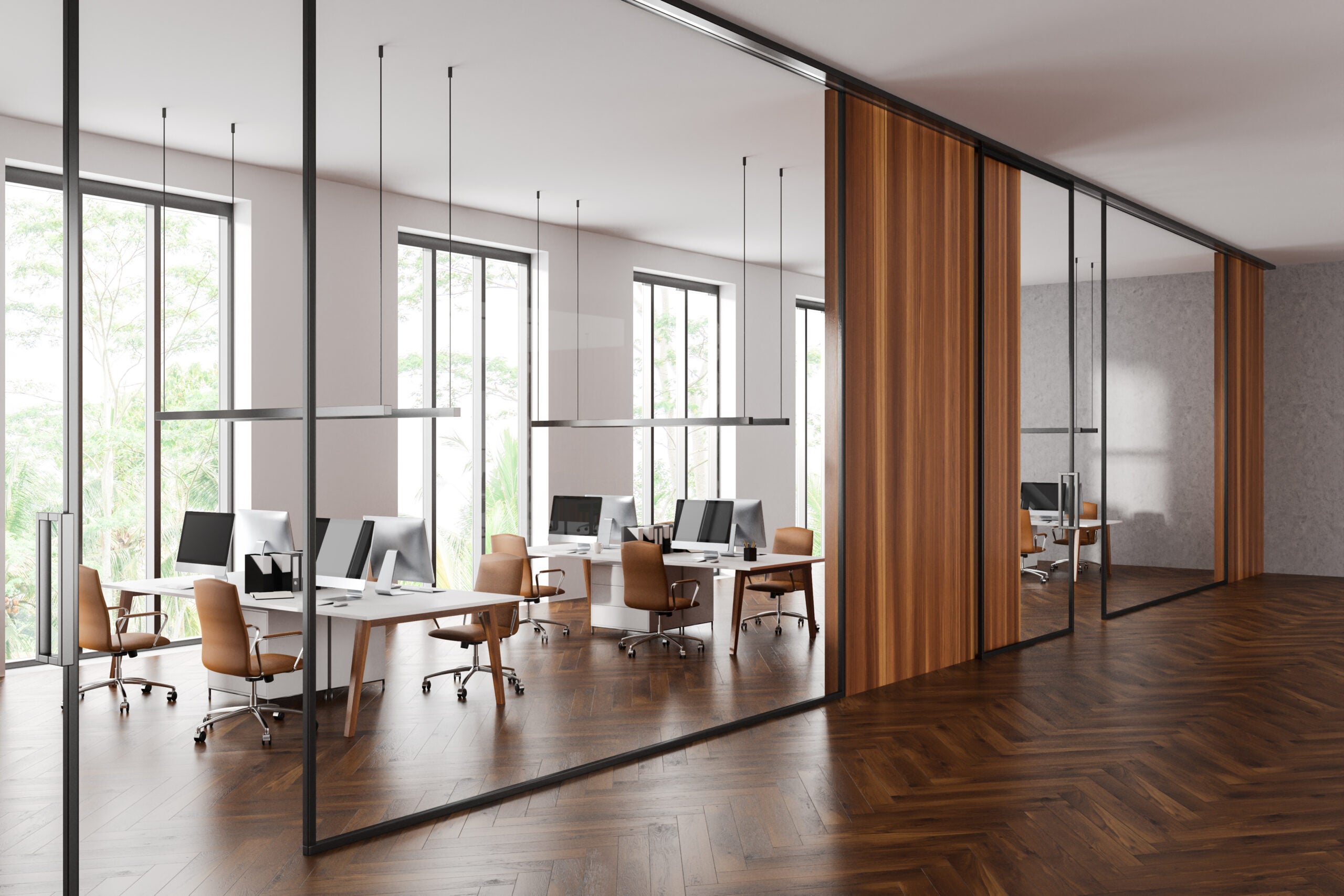Practicality vs. Visual Appeal In an Office–Why You Need Both
By: SmallBizClub

When you are making decisions about visual appeal in an office, you are frequently faced with a choice between aesthetics and functionality. Some improvements look very nice, but create all sort of inconveniences for people who use the space daily. On the other hand, purely practical improvements can sometimes destroy the visual identity of the building and draw negative reactions from everyone who enters it.
Both of these factors are very important and they must be carefully balanced, especially in an office space that frequently welcomes outside guests and clients. This may not be easy to do, but it’s attainable if you enlist the help of a professional office designer. Here are some things to keep in mind when trying to keep things in balance.
Why Visual Appeal in an Office
You don’t get a second chance to make the first impression, the old adage goes, and it rings very true for customer-facing businesses. For anyone who visits your office, the look and feel of the space go a long way toward determining what they will think about your company. From the reception area to meeting rooms and even the toilets, the guests will pay attention to every little detail and you certainly don’t want them to assume that you don’t care. This is why it pays off to make your office as visually impressive as you can.
Even if your office serves exclusively to house your employees and rarely welcomes outsiders, it is still a representation of your corporate identity. The workers talk to their friends and sometimes share office photos on social media, and an outdated or messy look will reflect badly on your business. On the other hand, office space that has been arranged with creativity and style can win over people who just heard of your company for the first time. Basically, good office design is an easy way to improve your reputation and promote your brand without paying for a big media campaign.
Why Practical Concerns Must Never Be Neglected
Above all, the office is a place where work needs to be done so it needs to provide optimal conditions for the type of activities your business is conducting on a regular basis. Failure to create such conditions can have serious ramifications, and negatively impact the output of the company as well as employee satisfaction. You don’t want your workers to use uncomfortable furniture or walk around obstacles when they need to get somewhere – this puts unnecessary strain on the workforce and that can’t be justified by a good looking office.
In the worst-case scenario, impractical office design can lead to workplace injuries or accidents that expose the employers to legal liabilities. It can also complicate employee retention and make it harder to keep teams engaged. Even more alarmingly, it signals that the decision makers care more about impressing people than putting their employees in a position to succeed, or that nobody took the time to predict potential problems and prevent them through smart planning.
Balancing Visual Appeal and Practicality on a Budget
Every space has different specifications and there are no universal solutions that work in every office. A setup that suits one office might be disastrous in another, so it’s imperative to take all relevant factors into account and come up with a plan that satisfies both requirements. You can’t pursue beauty at the expense of functionality, but you shouldn’t be content with a merely operational space that looks like it was put together without any considerations for the visual aspect.
It’s fairly easy to create an amazing office with an unlimited budget, but the true challenge is doing it without breaking the bank. That can be done only if the designer is well-briefed about the purpose of each part of the office, the number of people using it, known issues that existed before the renovation, etc. There are ways to save without compromising quality, i.e. by picking more affordable materials, cutting out bulky decorations in favour of more streamlined look, etc. However, you might have to think outside of the box to get there.
Who Is Responsible for Making the Office Beautiful and Functional?
It goes without saying that company ownership has final say about any office refurbishments, so they should also make sure that both aesthetic and pragmatic needs are met. Of course, owners can’t do it on their own and input from top and mid-level management is very important. Rank and file employees can provide valuable feedback as well, since they are the ones who know every square inch of the office.
A joint effort is thus the most sensible approach, especially when designing multi-purpose offices with lots of smaller segments that need to be connected into a functional unit. External expertise should be sought whenever possible, as it can be difficult for non-professionals to predict how a certain layout will perform in practice. It’s better to cast a wide net and seek opinions from different people than to rush into solutions that might end up falling short of expectations.
308 Views












